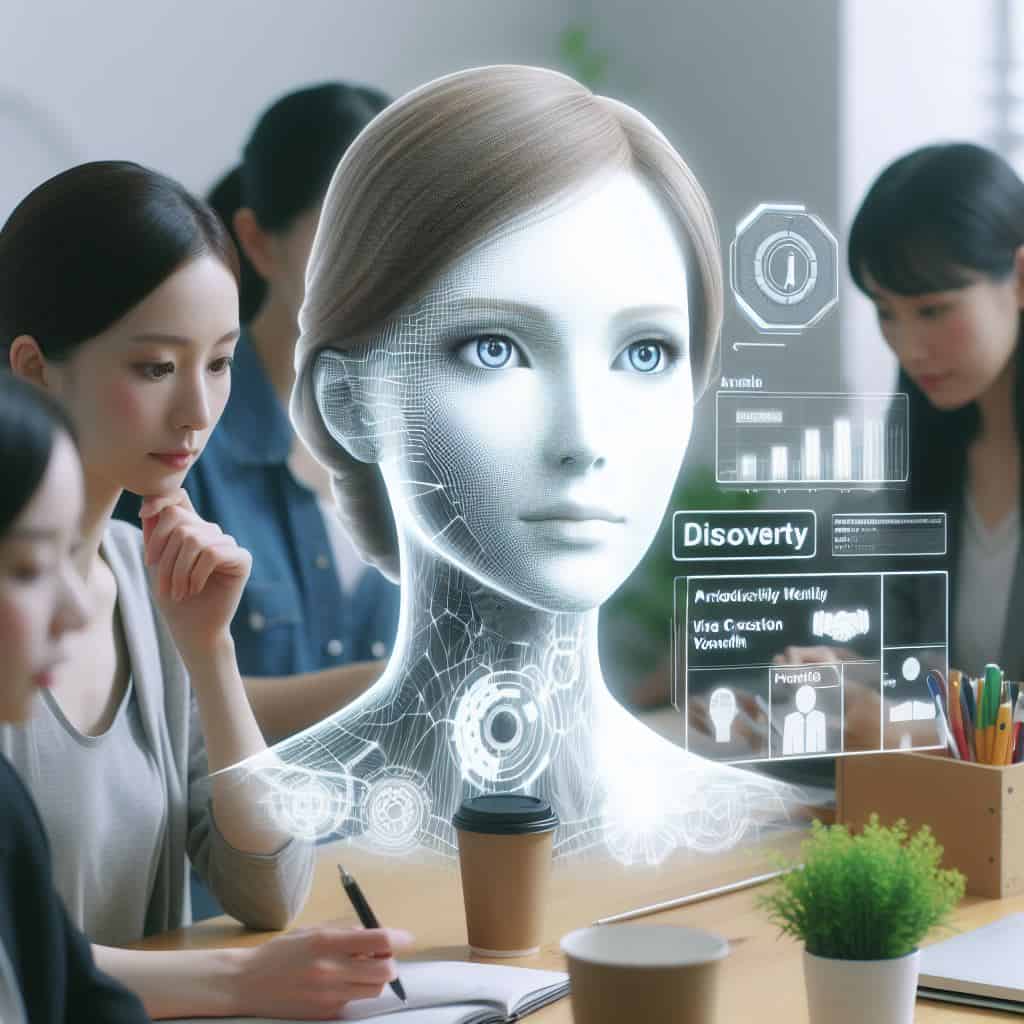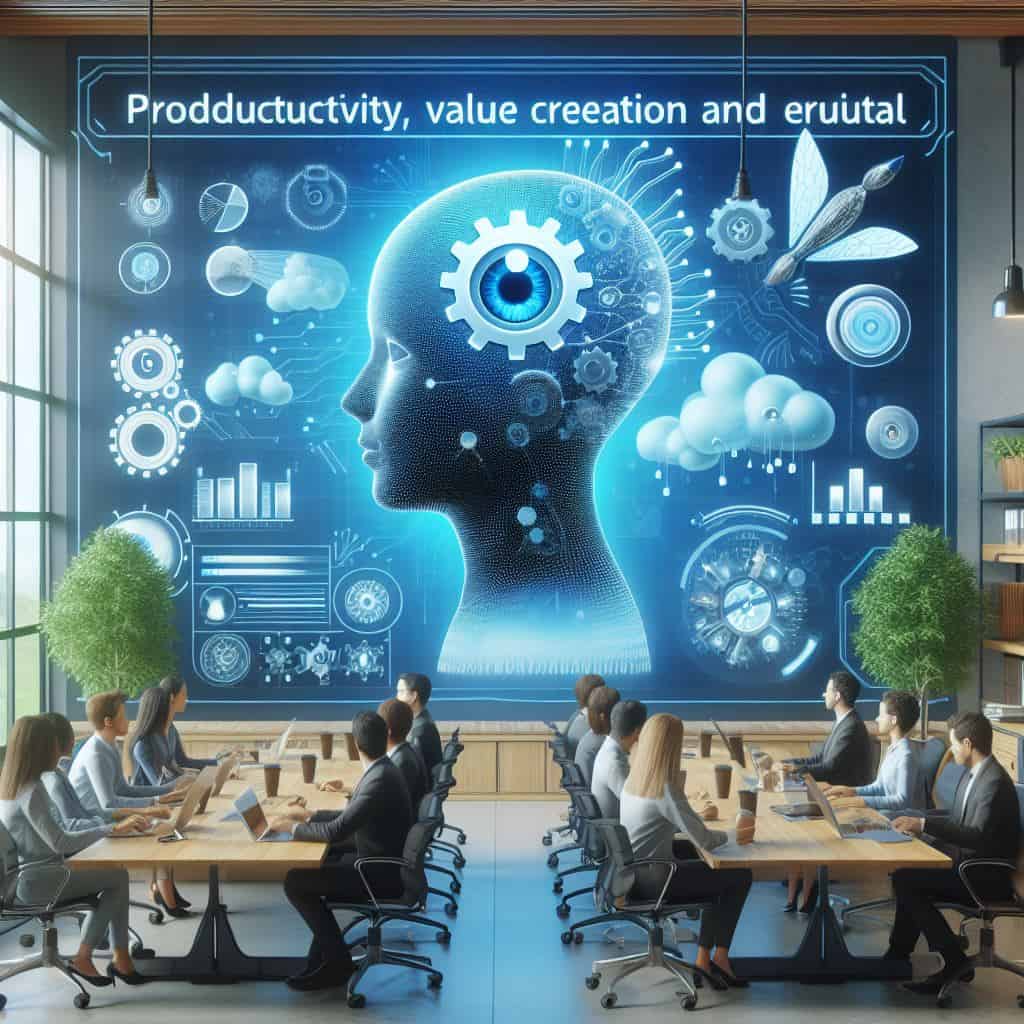
Introduction
Welcome to the transformative experience of Robometic’s AI Discovery Workshop, designed to enhance productivity and drive value creation in your enterprise. This comprehensive guide will empower you to lead an engaging and fruitful workshop that aligns stakeholders, sparks innovation, and sets the stage for successful AI integration.
The AI Discovery Workshop is a powerful tool that combines design thinking principles with hands-on activities and collaborative ideation. By bringing together diverse perspectives and leveraging creative problem-solving techniques, this workshop unlocks the potential of artificial intelligence to revolutionize your business processes, products, and services.
Key Benefits of the AI Discovery Workshop:
1. Align all stakeholders with the AI vision for your enterprise: Foster a shared understanding of the opportunities, challenges, and strategic direction for AI integration across teams and departments.
2. Validate AI ideas, design, and planned features to reduce risks and costs: Leverage the collective intelligence of your stakeholders to refine and validate AI solutions, minimizing the risk of costly mistakes and ensuring alignment with business objectives.
3. Foster collaboration, creative thinking, and effective communication: Encourage cross-functional teamwork, ignite innovative thinking, and break down communication barriers through interactive exercises and hands-on activities.
By following this comprehensive guide, you’ll be equipped to lead a transformative AI Discovery Workshop that sets the stage for successful AI integration and drives productivity and value creation within your enterprise.
Step 1: Set Clear Goals and Define Desired Outcomes

Before embarking on the AI Discovery Workshop journey, it’s crucial to establish clear goals and define the desired outcomes. This step ensures that the workshop remains focused and aligned with your organization’s strategic objectives.
Define SMART Goals:
– Specific: Clearly articulate the specific objectives and outcomes you aim to achieve through the workshop.
– Measurable: Establish quantifiable metrics or indicators to evaluate the success of the workshop and its outcomes.
– Achievable: Ensure that the goals are realistic and attainable within the scope and timeframe of the workshop.
– Relevant: Align the goals with your organization’s overall business strategy and priorities.
– Time-bound: Set a clear timeline for achieving the goals, including milestones and deadlines.
Example Goals:
– Identify and prioritize AI integration opportunities across various business functions and processes.
– Develop a strategic roadmap for AI implementation that aligns with your organization’s objectives and resource constraints.
– Address specific productivity challenges or inefficiencies within your operations by exploring AI solutions.
– Validate and refine AI product ideas, designs, and planned features based on stakeholder feedback and insights.
By setting clear goals and defining desired outcomes, you ensure that the AI Discovery Workshop remains focused, purposeful, and aligned with your organization’s needs.
Step 2: Involve Relevant Stakeholders

The success of an AI Discovery Workshop hinges on the diversity and expertise of the participants involved. Assembling a cross-functional team of stakeholders ensures that multiple perspectives are represented, fostering a comprehensive understanding of the challenges and opportunities at hand.
Build a Cross-Functional Team:
– Include key roles: Invite representatives from various departments and functions, such as Product Managers, UX/UI Designers, Solution Architects, Data Scientists, Business Analysts, and Subject Matter Experts.
– Ensure diversity of perspectives: Encourage participation from individuals with different backgrounds, experiences, and areas of expertise to enrich the discussion and generate diverse insights.
– Ideal workshop size: Aim for a group size of 4 to 7 participants to ensure active engagement and effective collaboration.
By involving a cross-functional team of stakeholders, you create an environment that promotes cross-pollination of ideas, facilitates knowledge sharing, and fosters a sense of ownership and buy-in for the AI solutions developed during the workshop.
Step 3: Choose Appropriate Tools and Techniques

The effectiveness of an AI Discovery Workshop relies heavily on the tools and techniques employed. Choose tools that align with the workshop format (in-person, remote, or hybrid) and facilitate collaborative ideation, design, and validation activities.
Tools for In-Person, Remote, or Hybrid Workshops:
– In-person: Utilize whiteboards, markers, sticky notes, and paper for brainstorming, ideation, and prototyping activities.
– Remote/Hybrid: Leverage digital collaboration tools such as FigJam, Miro, Invision’s Freehand, or Canva for virtual whiteboarding, ideation, and design activities.
– Conferencing tools: Utilize video conferencing platforms like Zoom, Google Meet, or Microsoft Teams to facilitate remote participation and collaboration.
– Document sharing: Utilize cloud-based document sharing platforms like Google Drive or Microsoft OneDrive to facilitate real-time collaboration and documentation.
Tailor Tools to Workshop Focus:
– Design-focused workshop: Incorporate design tools that allow for wireframing, user flow mapping, and rapid prototyping of AI solutions.
– Validation-focused workshop: Employ tools and techniques that enable stakeholders to validate product ideas, prioritize features, and gather feedback on proposed AI solutions.
Leverage Lego Serious Play Methodology:
Consider incorporating the Lego Serious Play methodology into your AI Discovery Workshop. This innovative approach leverages the power of metaphorical models built with Lego bricks to foster creative thinking, collaboration, and effective communication.
During ideation and prototyping activities, encourage participants to construct physical models using Lego bricks to represent their ideas for AI solutions. This hands-on, tangible approach sparks creativity, facilitates deeper understanding of complexities, and promotes collaboration among team members.
By selecting the right tools and techniques, you create an engaging and productive environment that promotes ideation, collaboration, and effective communication, setting the stage for successful AI integration within your enterprise.
Step 4: Stick to a Structured Agenda

A well-structured agenda is essential for ensuring that the AI Discovery Workshop runs smoothly and achieves its desired outcomes. By outlining a clear sequence of activities and allocating appropriate time for each session, you can maintain focus and ensure that all critical aspects of AI integration are addressed.
Example Workshop Agenda:
1. Business Model Canvas:
– Define the cost structure, target market, and product vision for your AI solution.
– Identify key partners, resources, and revenue streams.
– Align stakeholders on the overall business objectives and value proposition.
2. Technical Feasibility:
– Discuss the technical aspects of AI integration, including data requirements, infrastructure needs, and integration challenges.
– Explore potential AI technologies and frameworks that could be leveraged.
– Assess the current state of your organization’s technical capabilities and readiness for AI adoption.
3. Feature Prioritization:
– Prioritize AI features and capabilities based on their potential impact, feasibility, and alignment with business objectives.
– Identify the core features that will constitute the Minimum Viable Product (MVP) for your AI solution.
– Establish a roadmap for future feature development and iterative improvement.
Facilitator’s Role:
– Create and manage the agenda: Develop a comprehensive agenda that aligns with the workshop goals and desired outcomes.
– Guide participants through activities: Act as a facilitator, guiding participants through each activity and ensuring active engagement.
– Recap after each activity: Summarize key insights, decisions, and action items after each session to maintain focus and alignment.
– Keep stakeholders actively involved: Employ techniques to encourage participation, foster collaboration, and ensure that all voices are heard.
By following a structured agenda and leveraging the facilitator’s expertise, you can maximize the productivity and effectiveness of the AI Discovery Workshop, ensuring that all critical aspects of AI integration are thoroughly explored and addressed.
Step 5: Document and Share Workshop Outcomes

Effective documentation and communication are crucial for ensuring that the insights and decisions generated during the AI Discovery Workshop are captured, shared, and acted upon. By following a systematic approach to documentation and sharing, you can promote transparency, accountability, and seamless collaboration among stakeholders.
Documenting Work:
– Assign a note-taker: Designate a dedicated note-taker responsible for capturing detailed notes, ideas, and decisions during brainstorming and ideation sessions.
– Use collaborative documentation tools: Utilize cloud-based tools like Google Docs or Microsoft Word Online to facilitate real-time, collaborative documentation during the workshop.
Creating a Workshop Document:
– List deliverables and outcomes: Compile a comprehensive document that outlines the deliverables and outcomes for each activity, session, and overall workshop.
– Promote transparency and accountability: Clearly define action items, responsibilities, and timelines to ensure accountability and follow-through.
Sharing Outcomes:
– Share the document with the discovery team and stakeholders: Distribute the workshop document to all participants and relevant stakeholders to ensure everyone is aware of the outcomes and next steps.
– Ensure accessibility and understanding of workshop outcomes: Schedule a follow-up meeting or session to review the document, clarify any uncertainties, and address questions or concerns.
By documenting and sharing the outcomes of the AI Discovery Workshop effectively, you foster a culture of transparency, accountability, and collaborative decision-making, setting the stage for successful implementation of the AI solutions developed during the workshop.
Step 6: Follow-Up and Implement Workshop Outcomes

The AI Discovery Workshop is not a one-time event; it’s the starting point of a transformative journey toward AI integration and value creation within your enterprise. To ensure the successful implementation of the workshop outcomes, it’s crucial to follow up and take purposeful action.
Debrief Session:
– Clarify any uncertainties among participants: Schedule a debrief session to address any lingering questions or concerns that may have arisen during the workshop.
– Gather feedback for continuous improvement: Solicit feedback from participants on what worked well and what could be improved in future workshops, fostering a culture of continuous learning and improvement.
Implementing Outcomes:
– Plan the next phase of product discovery: Based on the outcomes of the AI Discovery Workshop, develop a detailed plan for the next phase of product discovery, including user research, prototyping, and testing.
– Incorporate outcomes into your product discovery roadmap: Integrate the insights, decisions, and prioritized features from the workshop into your organization’s overall product discovery roadmap, ensuring alignment with broader business objectives.
– Assign responsibilities and set timelines: Clearly define roles, responsibilities, and timelines for implementing the AI solutions developed during the workshop, fostering accountability and progress tracking.
By following up and implementing the outcomes of the AI Discovery Workshop, you ensure that the insights, ideas, and decisions generated during the collaborative sessions are transformed into tangible actions, driving productivity and value creation within your enterprise.
Moving Forward

Congratulations! You’ve successfully led an AI Discovery Workshop that aligns stakeholders, sparks innovation, and sets the stage for productive AI integration in your enterprise. By following the steps outlined in this comprehensive guide, you have created a fertile environment for collaboration, ideation, and effective decision-making.
Remember, the AI Discovery Workshop is not a one-time event; it’s the beginning of a transformative journey towards AI-driven success. Continuously iterate, refine, and adapt your approach based on feedback and lessons learned, fostering a culture of continuous improvement and innovation.
If you have any further questions or need additional guidance, feel free to reach out to the Robometic team. Our experts are dedicated to supporting you throughout your AI integration journey, ensuring that you unlock the full potential of artificial intelligence to drive productivity and value creation within your enterprise.
Embrace the future of AI-driven success and embark on this exciting journey with confidence and determination. The possibilities are limitless, and the path to transformation starts with the AI Discovery Workshop.
